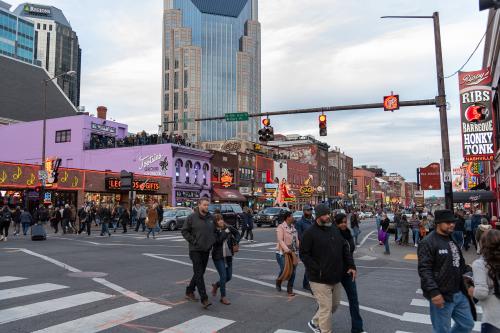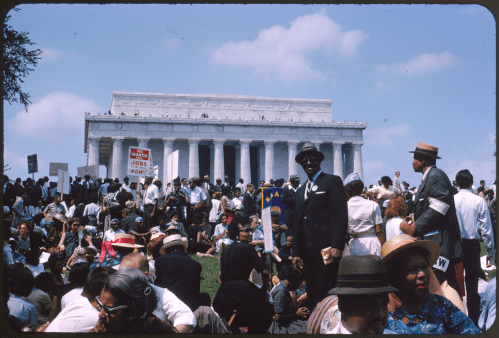This commentary was originally published by Fortune.
Addressing a group of 31 immigrants from 25 countries at a naturalization ceremony on Tuesday, President Obama spoke of the long history of immigration to the United States and the diversity of experiences of the nation’s new arrivals.
“One generation passes, two generation passes, and suddenly we don’t remember where we came from. And we suggest that somehow there is ‘us’ and there is ‘them,’ not remembering we used to be ‘them,’” he said.
As presidential candidates talk of barring Muslims from entering and shutting down our refugee program, it’s worth thinking about how “we” are new arrivals one day, but forget our origins the next. It’s a process some call integration and others call assimilation.
Integration takes place across both an individual immigrant or refugee’s life and across generations. The National Academies of Sciences (NAS), a nonprofit institution, released a new report on immigrant integration that helps to define and measure the process that President Obama called out, noting that integration happens because immigrants change when they arrive in the United States, and because native-born Americans change in response to immigrants.
Like it or not, integration has been happening over America’s 239-year history, as members of both groups—immigrants and the U.S.-born—continually come to resemble one another. And America has benefited greatly from the economic vitality and cultural vibrancy that immigrants and their descendants have brought and continue to contribute.
While 13% of the U.S. population is born outside of the United States, if you include their U.S.-born children, one in four residents are part of first or second immigrant generations. As a result, intermarriage rates between immigrants and natives—and between those of different races and ethnicity—have risen to one out of every seven marriages. More than half of recent marriages involving immigrants included a native-born partner, and their children are more likely to be identified as multiracial as a result, rising from 1% to 10% between 1970 and today, among infants.
What’s more, 35% of Americans say that one of their close kin is of a different race, according to a Pew Research Center survey. Together, these trends describe how social and cultural boundaries are diminishing as immigrants and natives literally come to resemble one another.
But even amongst these overall patterns, immigrants arrive with very different backgrounds in terms of language, education, skills, occupation, religion, family support, age at arrival, gender, and outlook. Some are fleeing war or persecution, others have job offers, some are joining family members already in the United States, and still others start and grow families here. All of these factors position immigrant newcomers and the next generations at different starting points, which affects how quickly and how well they enter into the social, economic, and political mainstream.
Certain obstacles—in particular, legal status and race—impede the integration process. The NAS study highlighted these concerns—they’re not only a problem for the first generation, but also for the second generation, who are, by definition, U.S. citizens. More than 5 million children live in households with at least one parent who does not have legal status. The majority of those children are U.S.-born, but an estimated three-quarters of a million immigrants are undocumented themselves. Lack of legal status limits access to healthcare and social services, higher education, jobs, and earnings. Moreover, black immigrant newcomers, and their children, in particular, inherit a significant barrier to integration due to discrimination, as compared with their nonblack counterparts. Other nonwhite immigrants also struggle with the kind of prejudice that comes with entering a racially stratified society.
Where immigrants settle matters, too, because integration is an inherently local experience. Where they live—across different states and within metropolitan areas, cities, suburbs, rural areas, and neighborhoods—represents an environment of reception that ultimately determines access to good schools, safe neighborhoods, and good jobs.
It is fair to say that the vast majority of immigrants enter the United States with the hope of more opportunities and a promising future for the next generation. This has been the irresistible attraction to this country for generations, and their drive and contributions are what we need to keep in mind before being so quick to turn away those simply seeking a better life.


Commentary
Op-edWhat everyone is missing about the immigration debate
December 20, 2015